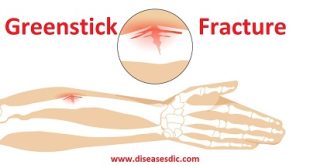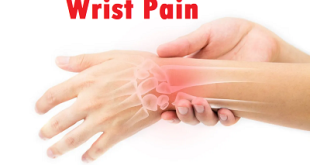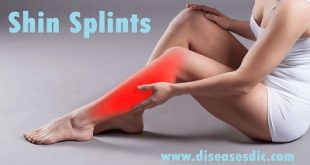Overview
Thumb arthritis stands as a prevalent cause of thumb pain. Situated at the thumb’s base, there exists a specialized joint termed the thumb carpometacarpal (CMC) joint. This joint facilitates an expansive array of thumb movements. Our capacity to bring the thumb in contact with the small finger, a skill referred to as “opposition,” distinguishes human hands from those of many other creatures. Owing to this joint’s dexterity, the base of the thumb is subjected to substantial stress from constant use. Consequently, this joint can undergo degeneration or develop arthritis over time. The once-smooth cartilage deteriorates, leading to direct contact between bones, often described as a “bone-on-bone” scenario. This can give rise to discomfort, diminished strength, and restricted thumb movement. Preceding injuries and a family history of osteoarthritis might also play a role in this process.
Arthritis affecting the thumb carpometacarpal (CMC) joint is a prevalent manifestation of degenerative joint ailment, often referred to as osteoarthritis. This type of arthritis prominently occurs in the hands, particularly in the thumb. Given the extensive role our thumbs play in various activities, they are highly susceptible to this form of osteoarthritis. As we age, osteoarthritis becomes increasingly common, constituting a natural component of the aging trajectory.
Types of thumb arthritis
There are two main types of thumb arthritis:
Osteoarthritis (OA) of the Thumb
Osteoarthritis, the most prevalent form of thumb arthritis, is characterized by the gradual breakdown of the cartilage that cushions the ends of bones in the thumb’s basal joint. This type of arthritis is often associated with the natural aging process and the wear and tear that the joint experiences over time. As the cartilage deteriorates, the bones can rub against each other, leading to pain, inflammation, and reduced joint function.
OA-related thumb arthritis is commonly observed in individuals over the age of 40, although it can develop earlier in those with a history of joint injuries or genetic predisposition. Typical symptoms include joint stiffness, swelling, pain during movement, and a decreased range of motion, all of which can impact daily activities that require thumb mobility.
Rheumatoid Arthritis (RA) of the Thumb
Rheumatoid arthritis presents a different picture when it comes to thumb arthritis. As an autoimmune disorder, RA involves the body’s immune system mistakenly attacking the synovium, the lining of the joints. This inflammatory condition can affect various joints, including the thumb’s basal joint.
Unlike OA, RA-related thumb arthritis is marked by more aggressive symptoms, such as severe joint pain, persistent swelling, warmth, and even deformities in the thumb joint due to the erosion of cartilage and bone. Rheumatoid arthritis can affect both hands symmetrically and is not solely a consequence of aging; it can develop at any age, impacting overall joint health and requiring specialized treatment approaches to manage pain, inflammation, and joint damage.
Epidemiology
Roughly 25% of women and 8% of men will exhibit radiographic signs of joint degeneration, but not all of them will experience symptoms. Symptomatic base of thumb issues are notably more common in women, outnumbering men by a ratio of 10-15 to 1. Racial disparities have also been noted, particularly between Asian and White groups. Postmortem analyses among White individuals reveal a significant 50% incidence of severe arthritis at the trapeziometacarpal (TM) joint, whereas corresponding studies in the Japanese literature report a much lower 8% prevalence of severe joint changes.
Pathophysiology of Thumb Arthritis
The carpometacarpal joint (CMCJ) of the thumb is a saddle joint with a biconcave-convex structure, enabling flexion/extension, adduction/abduction, and limited rotation. About 16 ligaments have been identified to stabilize this joint. Among these ligaments, the deep anterior oblique ligament holds particular significance. It has been suggested that attrition ruptures in this ligament could be the starting point for biomechanical changes that eventually lead to joint arthritis. Additionally, the joint’s morphology might contribute to arthritis development. Research by Eaton, Littler, and Aune has indicated that women tend to have a shallower trapezial articular surface compared to men, which could potentially explain the higher prevalence of CMCJ osteoarthritis in women.
Signs and symptoms
Pain is generally the first symptom of thumb arthritis. People can experience pain with gripping pinching, holding an object with pressure on the thumb or even at rest. People can also experience a decreased range of motion of the thumb with a distorted appearance, often appearing large and “boney” at the base of the thumb.
Other symptoms include:
- Swelling, stiffness or soreness at the base of the thumb
- Decreased strength with gripping or pinching objects
- Sharp pain or aching at the base of the thumb
- Decreased range of motion
- A bony bulge at the base of your thumb
- An enlarged thumb joint.
- Creaking or cracking sensations with thumb or hand movement
- Deformed thumb joints if the condition progresses to a later stage
Thumb Arthritis Hand
Causes of Thumb Arthritis
Thumb arthritis, also known as basal joint arthritis, can be attributed to various factors, primarily involving the wear and tear of the joint over time and, in some cases, genetic predisposition. Here are the key causes:
- Aging: As you get older, the cushioning cartilage in your thumb joint wears away, causing friction and damage.
- Genetics: Some people might inherit weaker cartilage, making them more likely to develop arthritis.
- Overusing the Joint: Doing repetitive tasks that involve a lot of thumb movement can speed up cartilage breakdown.
- Injury: Past injuries, like fractures, can increase the chances of arthritis by damaging the joint.
- Gender and Hormones: Women, especially after menopause, are more at risk, possibly because of hormonal changes.
- Joint Alignment: If your joint doesn’t line up well, it can cause uneven wear on the cartilage.
- Inflammation: Conditions like rheumatoid arthritis, where the body attacks its own joints, can lead to arthritis.
- Ligament Issues: Problems with the ligaments that hold the joint can make it less stable and contribute to cartilage damage.
- Metabolic Conditions: Some health problems like too much iron in the body can make arthritis more likely.
- Joint Shape: Differences in how your thumb joint is built can affect the risk of arthritis.
- Obesity: Being overweight puts extra stress on your joints, including the thumb.
- Other Health Conditions: Things like weak bones or infections in the joint can indirectly lead to arthritis.
Remember, the exact cause can vary from person to person. Taking steps to reduce these risks and getting help early can slow down the arthritis process.
Risk factors of Thumb Arthritis
Factors that can increase your risk of thumb arthritis include:
- Female sex.
- Age above 40 years.
- Obesity.
- Certain hereditary conditions, such as joint ligament laxity and malformed joints.
- Injuries to your thumb joint, such as fractures and sprains.
- Diseases that change the normal structure and function of cartilage, such as rheumatoid arthritis. Although osteoarthritis is the most common cause of thumb arthritis, rheumatoid arthritis can also affect the CMC joint, usually to a lesser extent than other joints of the hand.
- Activities and jobs that put high stress on the thumb joint.
Complications of Thumb Arthritis
Thumb arthritis can lead to various complications, which can impact hand function, daily activities, and overall quality of life. Here are some potential complications associated with thumb arthritis:
Pain and Discomfort – Persistent joint pain can be debilitating and affect your ability to perform everyday tasks that involve using your hands.
Decreased Range of Motion – As the arthritis progresses, the joint’s mobility can become limited, hindering movements such as gripping, pinching, and twisting.
Weakness – Reduced joint function can lead to muscle weakness in the thumb and hand, affecting your ability to grasp objects firmly.
Difficulty with Fine Motor Skills – Thumb arthritis can make activities requiring precision and fine motor skills, such as writing, typing, and buttoning clothes, challenging.
Joint Deformity – Severe arthritis can lead to joint deformities, causing the thumb to deviate from its normal position and affecting hand aesthetics and function.
Loss of Independence – In advanced cases, thumb arthritis can impact your ability to perform self-care tasks and maintain independence.
Impact on Work and Hobbies – Occupations and hobbies that involve manual dexterity and hand use might become difficult or impossible to pursue.
Psychological Impact – Chronic pain and functional limitations can lead to emotional distress, anxiety, and even depression.
Compromised Grip Strength – The loss of joint integrity can result in reduced grip strength, affecting your ability to hold objects securely.
Inflammatory Flares – In some cases, thumb arthritis can cause periods of increased inflammation and pain, known as flares, which can disrupt daily routines.
Impaired Quality of Life – Collectively, these complications can significantly impact your overall quality of life, leading to frustration and limitations in various aspects of life.
Need for Surgery – In advanced cases where conservative treatments are ineffective, surgical interventions like joint reconstruction or joint replacement might be necessary.
It’s important to address thumb arthritis early and work with healthcare professionals to manage symptoms and prevent complications. Timely intervention and appropriate treatment can help minimize the impact of these complications.
How to diagnosis thumb arthritis?
Diagnosing thumb arthritis involves a combination of medical history assessment, physical examination, and possibly imaging studies. A healthcare professional, typically a rheumatologist or orthopedic specialist, will conduct the diagnosis. The following points outline the diagnostic process:
Medical History
- The doctor will inquire about your symptoms, their duration, and any factors that exacerbate or alleviate them.
- They’ll ask about your medical history, previous joint injuries, family history of arthritis, and any relevant medical conditions.
Physical Examination
- The healthcare provider will perform a hands-on examination of your thumb and surrounding joints.
- They’ll assess the range of motion, tenderness, swelling, and any visible deformities.
- Pressure might be applied to the joint to check for pain and evaluate joint stability.
Diagnostic Tests
X-rays: These imaging studies can reveal joint damage, cartilage loss, bone spurs, and other structural changes characteristic of arthritis.
MRI (Magnetic Resonance Imaging): In more complex cases, an MRI can provide detailed images of soft tissues, such as ligaments, tendons, and cartilage, helping to confirm the diagnosis and assess the extent of damage.
Blood Tests: While there’s no specific blood test to diagnose thumb arthritis, certain tests like rheumatoid factor (RF) and anti-cyclic citrullinated peptide (anti-CCP) antibodies can help differentiate between types of arthritis, like RA.
Joint Aspiration (Arthrocentesis)
In some cases, the doctor might remove a small sample of fluid from the affected joint to analyze for signs of inflammation, infection, or crystals (as seen in conditions like gout).
Clinical Evaluation
The combination of medical history, physical examination, imaging results, and any relevant blood tests allows the doctor to make an accurate diagnosis of thumb arthritis and differentiate it from other similar conditions.
Consultation and Treatment Plan
Once a diagnosis is confirmed, the healthcare provider will discuss treatment options tailored to your condition, including pain management, anti-inflammatory medications, physical therapy, splinting, and, in some cases, surgical intervention.
Remember, the diagnostic process can vary based on individual circumstances and the severity of symptoms. Always consult a qualified healthcare professional for an accurate diagnosis and appropriate treatment recommendations.
Treatment
Thumb arthritis is a chronic condition that usually cannot be completely cured. Therefore, treatments focus on controlling symptoms and slowing the progression of the disease. Specific treatment options include:
Pain medications
To relieve pain, your doctor might recommend:
- Topical medications, such as capsaicin or diclofenac, which are applied to the skin over the joint
- Over-the-counter pain relievers, such as acetaminophen (Tylenol, others), ibuprofen (Advil, Motrin IB, others) or naproxen sodium (Aleve)
- Prescription pain relievers, such as celecoxib (Celebrex) or tramadol (Conzip, Ultram)
Applying heat or cold to the joint
Some people with thumb arthritis may experience a reduction in the pain by applying heat packs to their joint. Others may benefit from applying cold packs or ice to the joint. This can be repeated multiple times per day for relief.
Reducing or modifying movement of the thumb by Splints and Braces
- Some with thumb arthritis may experience a reduction of symptoms by resting their thumb regularly since the use of the thumb can aggravate damage and inflammation.
- Your physician may recommend wearing a supportive splint to reduce motion of the thumb and allow the joint to heal.
- Splints or braces may be worn just at night or during the day and night. In addition, some may benefit from using adaptive equipment that is designed for people with limited hand strength to complete everyday activities.
Steroid injections to the joint
If the joint pain is not relieved with reduced activity and pain medications, your physician may recommend trying a course of steroid injections to the joint, although, success rates vary. The steroid can reduce the inflammation in the joint. Steroid injections may be repeated every few months.
Surgery to repair or replace the joint
For those with thumb arthritis that does not respond to other treatments, your physician may recommend surgery to repair or replace the joint. There are a number of surgical options for treating thumb arthritis. After surgery, physical therapy will usually be recommended to aid in the recovery of function.
- Arthrodesis: This involves fusing the bones in the affected joint. This reduces pain and allows the joint to bear weight but limits its movement.
- Trapeziectomy: This involves removing one of the bones in the thumb joint and reconstructing the surrounding ligaments and tendons.
- Joint replacement: A third option is a joint replacement, in which the affected joint is removed and replaced with a prosthetic joint.
Lifestyle and home remedies
To ease pain and improve joint mobility, try to:
- Modify hand tools. Consider purchasing adaptive equipment such as jar openers, key turners and large zipper pulls designed for people with limited hand strength. Replace traditional door handles, which you must grasp with your thumb, with levers.
- Apply cold. Icing the joint for five to 15 minutes several times a day can help relieve swelling and pain.
- Apply heat. For some, heat may be more effective than cold in relieving pain.
Exercises
Exercises can be useful to keep your joints moving and muscles strong. The following exercises should be introduced slowly. Try performing each exercise 5 times. Repeat these exercises 2-3 times each day.
What are the preventive measures for thumb arthritis?
While you can’t completely prevent thumb arthritis, you can take steps to reduce your risk and manage the condition. Here are some preventive measures:
- Maintain a Healthy Weight: Keeping a healthy weight reduces stress on your joints, including your thumb joint.
- Practice Joint-Friendly Movements: Avoid repetitive and excessive thumb movements. Be mindful of how you use your thumbs in activities like texting or gripping.
- Use Assistive Devices: When doing tasks that strain your thumbs, use tools or devices that spread the load, like a wide-grip pen or ergonomic tools.
- Protect Your Joints: Use thumb splints or braces during activities that might strain your thumbs, especially if you’ve had injuries before.
- Stay Active: Regular exercise can help keep your joints mobile and strengthen the muscles around them.
- Balanced Diet: Consuming a diet rich in anti-inflammatory foods (like fruits, vegetables, and fish) can support joint health.
- Joint-Friendly Techniques: Learn proper techniques for activities involving your thumbs, like lifting objects or using tools.
- Stay Hydrated: Drinking enough water can help keep cartilage lubricated.
- Manage Health Conditions: If you have conditions like diabetes or iron overload, manage them to reduce their impact on your joints.
- Ergonomic Workspaces: If you work on a computer, set up your workspace ergonomically to minimize strain on your hands and thumbs.
- Protect Your Hands: Use gloves when doing activities that could stress your hands or expose them to cold temperatures.
- Stretch and Move: Incorporate hand and thumb stretches into your daily routine to maintain flexibility.
- Listen to Your Body: Pay attention to any discomfort or pain in your thumbs, and take breaks when needed.
- Regular Check-ups: Visit a healthcare professional regularly to catch any issues early and get guidance on managing your joint health.
Remember that while these steps can help reduce your risk, some factors like genetics and aging are beyond your control. If you start experiencing thumb pain or notice any changes, consult a medical professional for proper diagnosis and personalized advice.
 Diseases Treatments Dictionary This is complete solution to read all diseases treatments Which covers Prevention, Causes, Symptoms, Medical Terms, Drugs, Prescription, Natural Remedies with cures and Treatments. Most of the common diseases were listed in names, split with categories.
Diseases Treatments Dictionary This is complete solution to read all diseases treatments Which covers Prevention, Causes, Symptoms, Medical Terms, Drugs, Prescription, Natural Remedies with cures and Treatments. Most of the common diseases were listed in names, split with categories.








interesting topics and informative
very relevant
nice and useful